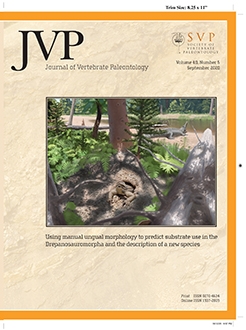The oldest record of a carnivoran mammal in South America corresponds to the extinct procyonid Cyonasua (late Miocene–early Pleistocene). Up to now, this genus was recorded in Argentina, Uruguay, Bolivia, and Venezuela. In this contribution, we report the first occurrence of Cyonasua in the Pacific coast of Peru, recovered from the late Miocene marine deposits of the Pisco Formation. The fossil material comprises postcranial bones of two individuals (MNHN SAS 1625: left femur; MNHN PPI 262: axis, right talus, and left metatarsal III). The morphology and sizes of these new fossil specimens, allow us to refer them to Cyonasua sp. This record reaffirms that procyonids were the first North American carnivorans that arrived in South America prior to the full emergence of the Isthmus of Panama, as part of the proto-Great American Biotic Interchange. The presence of Cyonasua in marine deposits of the Pacific margin of Peru is further evidence for its affinity to coastal areas and water bodies, and provide clues to propose the arid coast of western South America as a route for dispersal to the southern lands.
How to translate text using browser tools
5 January 2021
Cyonasua (Carnivora, Procyonidae) from Late Miocene of Peru Shed Light on the Early Dispersal of Carnivorans in South America
Juliana Tarquini,
Leopoldo H. Soibelzon,
Rodolfo Salas-Gismondi,
Christian De Muizon
ACCESS THE FULL ARTICLE






